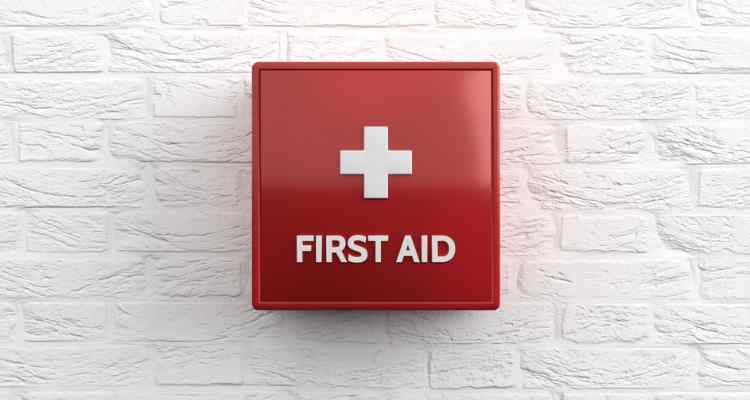Accidents and emergencies strike when we least expect them, underscoring the importance of being prepared with basic first aid training. A solid understanding of important safety techniques can be the difference between life and death, allowing you to take swift action and prevent further harm. In this blog, we present a beginner’s guide to essential first-aid techniques. From assessing the situation with clarity to performing critical life-saving skills, this comprehensive guide will empower you with the knowledge and confidence needed to respond effectively in emergencies. So, read on to learn more!
Assess the Situation
The first step in any first aid situation is to assess the scene for potential dangers. It is crucial to prioritize your safety and the safety of others before assisting others. Look out for hazards such as fire, traffic, or unstable structures. Ensure that you call for professional help, such as emergency medical services, if necessary. By conducting a thorough assessment, you can effectively minimize risks and create a safer environment for administering first aid.
Perform CPR (Cardiopulmonary Resuscitation)
Cardiopulmonary Resuscitation (CPR) is a vital life-saving technique that can sustain a person’s life until medical professionals arrive. When performing CPR, following a specific sequence of steps is important. First, check for responsiveness by tapping the person and shouting, “Are you okay?” If there is no response, call for help and ask someone to bring an automated external defibrillator (AED), if available. Start chest compressions by placing the heel of your hand on the center of the person’s chest and interlocking your other hand. Perform compressions at a rate of 100-120 compressions per minute, allowing the chest to recoil between compressions fully. If you have taken first aid training in CPR, incorporate rescue breaths into the process as well. CPR can significantly increase a person’s chance of survival in a cardiac arrest situation.
Stop Severe Bleeding
In cases of severe bleeding, immediate action is crucial to prevent excessive blood loss. When faced with severe bleeding, remember to apply direct pressure to the wound using a clean cloth or your hand. This pressure helps to control the bleeding and promote clotting. If possible, elevate the injured limb to reduce blood flow to the area. If bleeding persists, apply additional pressure or use a tourniquet as a last resort. However, it is important to note that tourniquets should only be used in extreme situations and should be released every two hours to prevent tissue damage.
Handle Choking Emergencies
Choking can be a life-threatening situation, especially if the person cannot breathe. To assist a choking individual, quickly determine if they can speak or cough. If they can, encourage them to continue coughing to dislodge the object. If the person cannot breathe, cough, or speak, performing the Heimlich maneuver (abdominal thrusts) is extremely important. Stand behind the person, wrap your arms around their waist, and make a fist with one hand. Place your fist just above the navel and below the ribcage. Grasp your fist with your other hand and give quick inward and upward thrusts until the object is dislodged. It is crucial to act promptly to prevent further blockage of the airway.
Treat Burns and Scalds
Burns and scalds can occur in various situations, and providing immediate treatment is essential to minimize damage and alleviate pain. When faced with a burn or scald, start by removing the person from the source of the burn and cool the affected area under cool (not cold) running water for at least 10 minutes. This helps to reduce heat and minimize the depth of the burn. It is important not to apply creams, ointments, or adhesive bandages directly to the burn. Instead, cover the burn with a clean, non-stick dressing or cling film to protect it from infection. It is crucial to remember not to burst any blisters that may have formed, as they act as a natural barrier against infection. Seeking medical attention for severe burns or burns that cover a large body area is essential, as specialized care may be required.
Support Fractures and Sprains
Providing immediate support can help alleviate pain and prevent further damage when encountering fractures or sprains. Start by encouraging the injured person to rest and immobilize the injured area. Applying ice packs wrapped in a cloth to the affected area can help reduce swelling and alleviate pain. To avoid damaging the skin, it is important to apply the ice pack intermittently for about 15 minutes at a time. Using a splint to immobilize a suspected fracture is advisable, ensuring it is well-padded and securely fastened. This stabilization helps prevent further injury and reduces discomfort during transportation to a medical facility.
Conclusion
Being equipped with basic first aid training and techniques is invaluable in emergencies, as it can potentially save lives and minimize the severity of injuries. Remember to assess the situation for potential dangers before providing aid, and always prioritize your safety and the safety of others. Performing CPR, stopping severe bleeding, handling choking emergencies, treating burns and scalds, and supporting fractures and sprains are fundamental skills to learn. However, it is important to note that these techniques are not a substitute for professional medical care. Seeking immediate professional help is essential in critical situations. By gaining a basic understanding of first aid, you can make a difference in emergencies, providing immediate care and support until medical professionals arrive.

